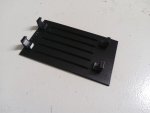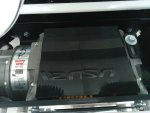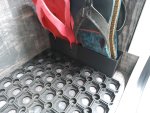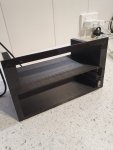clydeps
Member
Problem - the latches on my under-body lockers can be jammed by the contents of the locker shifting and preventing the latch from opening. This happened last weekend - I was able to pry the other end open a bit and poke in a long stick to shift the object in the way, but it could be serious since there is absolutely no other way to get into the locker.
Solution - add a guard over the internal latch mechanism to stop anything moving into the danger area. I ran several off on my 3D printer.
Here's what the latch looks like originally in the open position - it swings down to open.
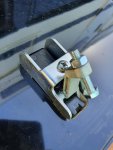
And here it is with the guard in place:
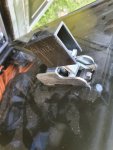
Solution - add a guard over the internal latch mechanism to stop anything moving into the danger area. I ran several off on my 3D printer.
Here's what the latch looks like originally in the open position - it swings down to open.

And here it is with the guard in place:


